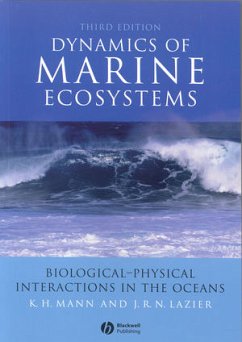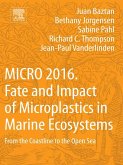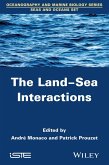The new edition of this widely respected text provides comprehensive and up-to-date coverage of the effects of biological-physical interactions in the oceans from the microscopic to the global scale. * considers the influence of physical forcing on biological processes in a wide range of marine habitats including coastal estuaries, shelf-break fronts, major ocean gyres, coral reefs, coastal upwelling areas, and the equatorial upwelling system * investigates recent significant developments in this rapidly advancing field * includes new research suggesting that long-term variability in the global atmospheric circulation affects the circulation of ocean basins, which in turn brings about major changes in fish stocks. This discovery opens up the exciting possibility of being able to predict major changes in global fish stocks * written in an accessible, lucid style, this textbook is essential reading for upper-level undergraduates and graduate students studying marine ecology and biological oceanography
Dieser Download kann aus rechtlichen Gründen nur mit Rechnungsadresse in D ausgeliefert werden.
'The authors have done an admirable job. I will happily recommendthis text to my students and colleagues.'
K J Flynn, University of Swansea
'I have used 'Dynamics of Marine Ecosystems' extensively for myundergraduate oceanography teaching to students from widelydifferent scientific backgrounds. The students found theexplanation of the physical processes in this book to be at justthe right level, being advanced, up-to-date and clear, but withouta lot of complex mathematics. The formulae contained in the bookare simple summaries of the physical processes and are easy touse.'
Paul Russell, University of Plymouth
"The book is comprehensive, properly organized, thoroughlyresearched, thoughtfully synthesized and very well written. . . Thebook should be mandatory reading not just for senior undergraduateand graduate students . . . but also for those empowered to set upand implement policy for ocean governance."
Botanica Marina
K J Flynn, University of Swansea
'I have used 'Dynamics of Marine Ecosystems' extensively for myundergraduate oceanography teaching to students from widelydifferent scientific backgrounds. The students found theexplanation of the physical processes in this book to be at justthe right level, being advanced, up-to-date and clear, but withouta lot of complex mathematics. The formulae contained in the bookare simple summaries of the physical processes and are easy touse.'
Paul Russell, University of Plymouth
"The book is comprehensive, properly organized, thoroughlyresearched, thoughtfully synthesized and very well written. . . Thebook should be mandatory reading not just for senior undergraduateand graduate students . . . but also for those empowered to set upand implement policy for ocean governance."
Botanica Marina









